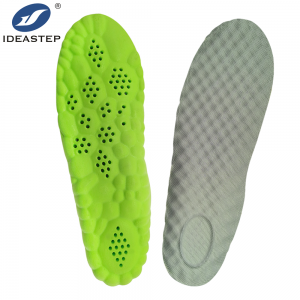
Polyurethane (PU) insoles are widely used for their comfort, support, and durability. However, it is important to be aware of certain considerations when using PU insoles to maximize their benefits and ensure a positive experience. This article will provide a detailed overview of the key factors to consider when using PU insoles.
1. Proper Fit
When using PU insoles, it is crucial to ensure they fit properly within the shoe. Insoles that are too large or too small may cause discomfort, affect the shoe’s fit, or even lead to foot pain. Trim the insoles if necessary to achieve an optimal fit, allowing for adequate toe room and ensuring they cover the entire length of the shoe.
2. Break-in Period
PU insoles may require a break-in period to adapt to the shape of the foot and provide optimal support. Initially, they may feel slightly stiff or uncomfortable. Gradually increase the duration of wear each day to allow the insoles to mold to the contours of the foot, providing customized support and enhanced comfort over time.
3. Hygiene and Maintenance
Maintaining proper hygiene is essential when using PU insoles. Regularly remove the insoles from the shoes and clean them using mild soap and water. Allow them to air dry completely before placing them back in the shoes. This helps prevent the buildup of odor-causing bacteria and ensures a fresh and hygienic environment for the feet.
4. Compatibility with Shoe Type
Consider the type of shoe you are using the PU insoles with. While PU insoles are versatile and can be used in various shoe types, including athletic shoes, casual shoes, and boots, it is important to ensure they are compatible with the specific shoe design. Some shoes may have built-in cushioning or arch support, which may not work well in conjunction with PU insoles. Assess the fit and comfort of the insoles within the shoe to determine compatibility.
5. Allergies and Sensitivities
Although PU is generally considered a hypoallergenic material, some individuals may have specific allergies or sensitivities to it. If you have a known allergy to PU or experience any adverse reactions such as skin irritation or rashes, discontinue use and consult a healthcare professional. It is always important to prioritize personal comfort and safety when using any type of footwear accessory.
6. Replacement and Lifespan
PU insoles, like any other footwear component, have a lifespan. Over time, they may lose their cushioning properties or become worn out. It is recommended to replace PU insoles periodically, especially if they show signs of wear, such as flattened cushioning or visible deterioration. Regularly assess the condition of the insoles and replace them as needed to maintain optimal comfort and support.
Using PU insoles can provide numerous benefits, including enhanced comfort, support, and durability. However, it is essential to pay attention to factors such as proper fit, break-in periods, hygiene, shoe compatibility, allergies, and replacement timelines. By considering these factors, individuals can maximize the advantages of PU insoles and ensure a positive experience for their feet. If you are interested in PU insoles, you can continue to visit this page (https://www.aideastep.com/pu-insoles/) and tell us your needs.
